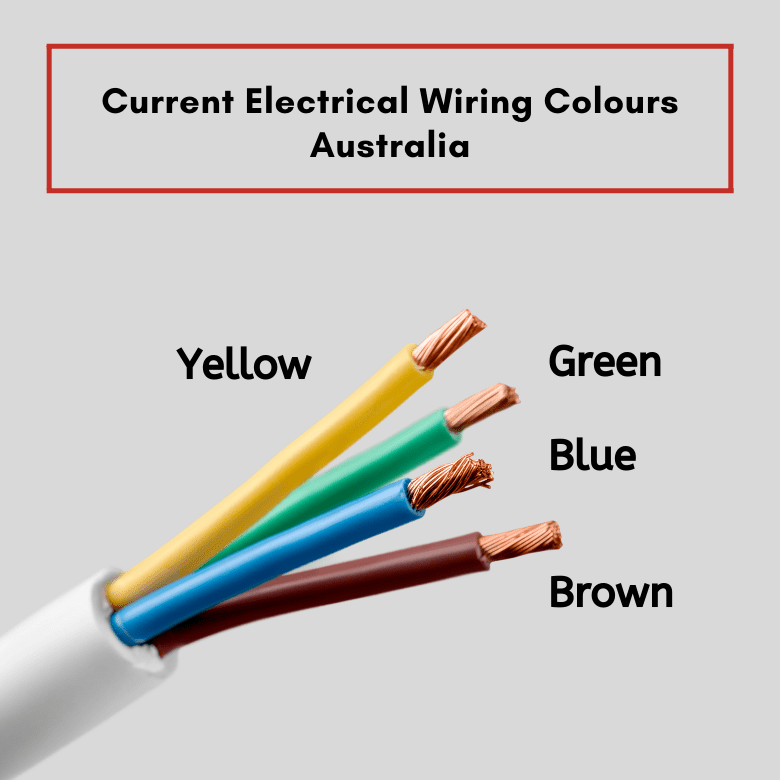Old Wiring Colours in Australia: What You Need to Know
Your Guide to Australian Wiring Colours and Electrical Safety
In 2018, Australia introduced updated wiring colour standards to bring the country in line with international practices and improve consistency across electrical installations. These changes were designed to make wiring easier to identify and safer to work with. If your home or workplace was wired before 2018, you may still have the older wire colours. There is no need to be concerned, as the functionality of each wire has not changed and older wiring remains safe when properly installed and maintained.
This article provides a detailed overview of the old wiring colours used in Australia and explains the new set of standards introduced under the AS 3000 regulation. By understanding these changes, you can identify different wires safely, avoid confusion during renovations or repairs, and ensure your electrical system complies with current regulations.
Current Electrical Wiring Colours in Australia
Depending on when your electrical circuits were installed and whether your system uses single-phase or three-phase wiring, the colours of your wires may differ from those in other homes or workplaces. Understanding these colours is important for safety, maintenance, and any renovations you may plan.

As of 2021, the current Australian standards for single-phase wiring use the following colours:
- Active: Brown, which carries electricity from the power source to your home or device.
- Neutral: Blue, which completes the electrical circuit by carrying current back to the source.
- Earth: Green and Yellow, which provides a safety path to prevent electric shocks.
Each wire colour is standardised to indicate its role in the electrical system. This helps reduce confusion and improves safety during installation or repairs.
For three-phase wiring, commonly used in larger buildings or industrial settings, the updated colour standards are as follows:
- Phase 1: Brown
- Phase 2: Black
- Phase 3: Grey
- Neutral: Blue
- Earth: Green and Yellow
Neutral and earth wire colours remain the same in both single-phase and three-phase systems. The different colours for each phase wire make it easier for electricians to identify individual circuits, reduce the risk of mistakes, and ensure safe handling of electrical systems.
Understanding these standards is especially important if you are renovating, extending, or performing maintenance on your property. Even if your wiring follows the old colour standards, knowing the current system allows you to communicate effectively with licensed electricians and ensures that any work is carried out safely and according to Australian regulations.
Old Wiring Colours in Australia
If your electrical wiring system was installed before 2018, the colours of your wires are likely different from the current standards. Fortunately, Australian regulations ensure that even if the wiring colours are outdated, the system remains safe and fully functional.
For single-phase wiring installed prior to 2018, the colours were:
- Active: Red
- Neutral: Black
- Earth: Green
For three-phase wiring installed before 2018, the colours were:
- Phase 1: Red
- Phase 2: White
- Phase 3: Blue
- Neutral: Black
- Earth: Green
Understanding the Differences Between Old and New Standards
The main concern with older wiring colours is potential confusion, especially during renovations or maintenance. For example, if you hire an electrician or refer to modern wiring diagrams, the colours in your home may not match the current standards. This can make identifying circuits more challenging and increases the risk of accidental contact with live wires, which is very dangerous for anyone without proper training.
Despite these differences, most licensed electricians are familiar with both old and new wiring standards. This means that outdated wire colours are generally not a cause for concern. To stay informed, you can also review information about test and tag colours in Australia, which can help ensure electrical safety across your property.
It is still a good idea to label or document any older wiring in your home or workplace. This can make future maintenance, renovations, or inspections much easier and safer. Regular electrical inspections and testing can also help identify any potential issues early, giving you peace of mind that your system remains compliant with current safety standards.
Companies like Jim’s Test & Tag provide professional testing and tagging services to help ensure that your electrical equipment and wiring meet Australian safety standards. By understanding both old and new wiring colours and using professional services when needed, you can communicate effectively with electricians and ensure that any work on your electrical system is carried out safely and efficiently.




